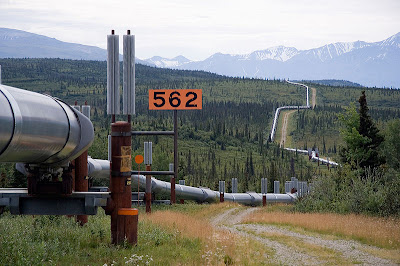Here is the list of top 10 most expensive objects according to Wikipedia.It shows what some of the worlds richest countries spend their billions on and It is for the sole purpose of identifying expensive artificial objects and the respective economic costs involved in building them.note that The figures below represent the estimated cost to build these objects, not taking into account inflation.
International Space Station
Country : Canada, European Space Agency, Japan, Russia and United States
Total cost : 157 billion
The International Space Station (ISS) is an internationally developed research facilitythat is being assembled in low Earth orbit. On-orbit construction of the station began in 1998 and is scheduled for completion by 2011.The ISS serves as a research laboratory that has a microgravity environment in which crews conduct experiments in biology, human biology, physics, astronomy and meteorology.Link
Itaipu Dam
Country : Brazil and Paraguay
Total Cost : 27 billion
The Itaipú hydroelectric power plant is the largest development of its kind in operation in the world.Located at the Brazilian-Paraguaian border and not far from the Argentinian border.In 2000, the power plant generated 93,428 GWh (gigawatthours) of electricity, a word record for hydroelectricity generation.The Itaipu dam is 7,919 meters long (counting the Hernandarias dike) with a maximum height of 196 meters, equivalent to a 65-story building. It consumed 12.3 million cubic meters of concrete, while the iron and steel employed would permit the construction of 380 Eiffel Towers.(Link)
Three Gorges Dam
is a hydroelectric river dam that spans theYangtze River in the town of Sandouping, located in the Yiling District of Yichang, at theHubei province, China. It is the world's largest electricity-generating plant of any kind.
Country : China
Total Cost : 25 billion
From completion until September 2009 the dam has generated 348.4 TWh of electricity, covering more than one third of its project cost.The Three Gorges Dam is the world’s largest hydroelectric power station by total capacity, which will be 22,500 MW. It will have 34 generators: 32 will be main generators, each with a capacity of 700 MW, and the other two will be plant power generators, each with capacity of 50 MW.Link
James Bay Project
Country : Canada
Total Cost : 13.8 billion
James Bay Project, a monumental hydroelectric-power development on the east coast of James Bay was initiated in 1971 and is still incomplete. The $13.7-billion project entailed massive diversions of water from the Eastman, Opinaca and Caniapiscau (KOKSOAK) rivers to dammed reservoirs on LA GRANDE RIVIÈRE.If fully expanded to include all of the original planned dams, as well as the additional "James Bay II" projects, the system would generate a total of 27,000 MW, making it the largest hydroelectric system in the world.
Gerald R. Ford class aircraft carrier
Advance construction of the CVN-21 project began on August 11, 2005 with the beveling of a 15-ton metal plate at Northrop Grumman Newport News' shipyards in Virginia. This metal plate will eventually be used in the construction of CVN-78. Advance construction will take an estimated two years before construction can begin on the actual ship herself.The keel of the first unit (CVN-78) was laid on 14 November 2009 and delivery to the Navy is scheduled for 2015.
Country : United States
Total Cost : 8.1 billion
Trans-Alaska Pipeline System
Country : United States
Total Cost : 8 billion
The Trans-Alaska Pipeline System (TAPS), includes the Trans-Alaska Pipeline, 11 pump stations, several hundred miles of feeder pipelines, and the Valdez Marine Terminal. It is commonly called the Alaska Pipeline, Trans-Alaska Pipeline, Alyeska Pipeline or The Pipeline (in Alaska), but those terms technically apply only to the 800.302 miles (1,287.961 km) of 48-inch (122 cm) pipe that convey oil from Prudhoe Bay, to Valdez, Alaska, privately owned by the Alyeska Pipeline Service Company.Link
Olkiluoto Nuclear Power Plant
Country : Finland
Total Cost : 7.1 billion
The Olkiluoto Nuclear Power Plant is on Olkiluoto Island, which is on the shore of the Gulf of Bothnia in the municipality of Eurajoki in western Finland. It is one of Finland's two nuclear power plants, the other being the two-unit VVERLoviisa Nuclear Power Plant.
ITER
Cut-away of a model of the ITER Vacuum Vessel showing part of the 440 Blanket modules attached to the inner wall and the Divertor cassettes at the bottom
Country : China, European Union, India, Japan, Russia, South Korea, United States
Total Cost : 6.5 billion
ITER (originally the International Thermonuclear Experimental Reactor) is an international tokamak (magnetic confinement fusion) research/engineering project that could help to make the transition from today's studies of plasma physics to future electricity-producing fusion power plants.
New Bay Bridge
Work is ongoing on the eastern span replacement of the San Francisco–Oakland Bay Bridge. The new eastern span is currently scheduled to open to traffic in 2013.The originalSan Francisco–Oakland Bay Bridge, built in 1936, became the subject of concern after a section collapsed during the Loma Prieta earthquake on October 17, 1989.
Country : United States
Total Cost : 6.3 billion
construction began on a replacement for the cantilever portion of the bridge on January 29, 2002, with completion originally slated for 2007. The new eastern "signature" span was to feature a pair of side-by-side, five-lane concrete viaducts linking to a single-towered, self-supporting suspension span between the viaducts. If completed, this will become the largest bridge of this type. The approach viaducts from the eastern shore are currently being constructed just north of and parallel to the existing span. The grade of the new approach to the channel span is somewhat less than that of the present structure.
Large Hadron Collider
CERN
Cost : 6.3 billion
The Large Hadron Collider (LHC) is a gigantic scientific instrument near Geneva, where it spans the border between Switzerland and France about 100 m underground. It is a particle accelerator used by physicists to study the smallest known particles – the fundamental building blocks of all things. It will revolutionise our understanding, from the minuscule world deep within atoms to the vastness of the Universe.














